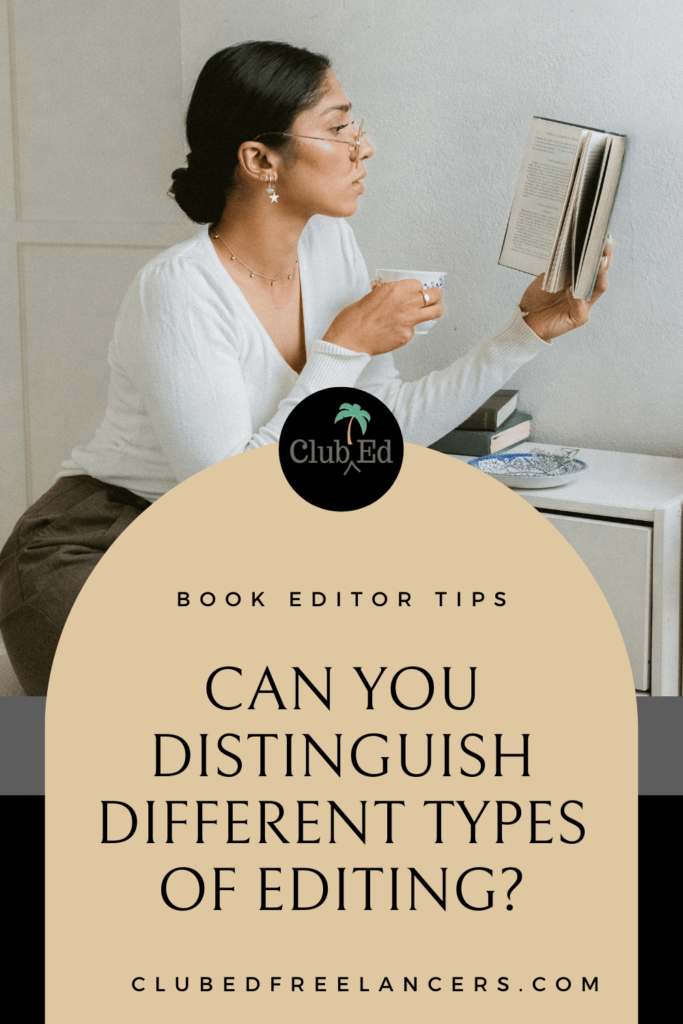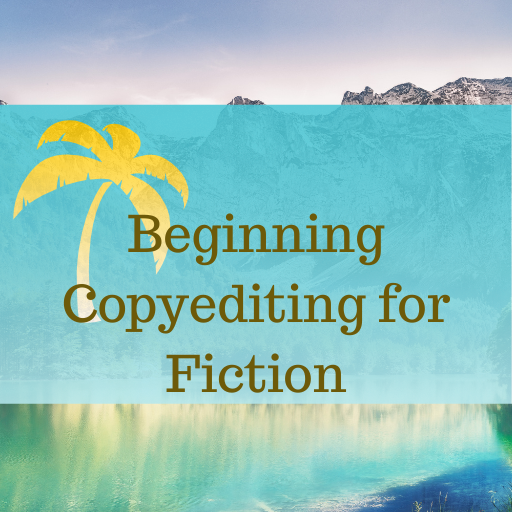Editorial Distinctions: Different Types of Editing
Knowing the different types of editing will help you understand how they can often be fused together in a freelance editor’s project.

The 3 Different Types of Editing
Developmental editing (abbreviated DE or dev) looks at the big-picture concerns of a manuscript (ms). For nonfiction, we would ask: Is the structure logical? Is the argument well-supported with facts and examples? In fiction, we would ask: Does the plot make sense? Are the characters fully developed? Would readers want to keep turning the pages?
Copyediting (CE) and line editing (LE) are both types of sentence-level editing. In copyediting, the editor ensures the ms is consistent (for example, Raphael isn’t sometimes spelled Rafael), that the commas are in the right place, and that the prose adheres to a specific style. In book publishing, this is typically The Chicago Manual of Style.
Line editing is less concerned about ensure adherence to a style and more about polishing the author’s prose. Story problems, such as info-dumping and head-hopping, can be addressed in a line edit.
DE v CE: The developmental edit focuses on the overall manuscript (does it work for its intended audience and does it fulfill its intended purpose?) The copyedit focuses on the sentence-level (basic errors of grammar/spelling/usage are corrected; house style is applied consistently).
DE v. LE: Line editing is editing at the sentence level to polish the prose. This can be part of a copyedit, if the copy editor is untangling awkward sentences, but it can also include things like editing to reduce the number of dialogue tags or editing stilted dialogue.
These sentence-level interventions can be performed as part of a developmental edit but if there are significant developmental problems, like a lack of a strong central conflict or badly drawn characters, it is better to address those problems first as they will change the ms significantly. Then sentence-level edits and corrections can be made.
Distinguishing Between the Different Types of Editing
Developmental Editing vs Critique
DE v Critique: A critique is simply a reader reaction. The reader says how they have experienced the story and leaves it up to the author to decide what, if anything, to do about it. Obviously, a critique could be more than that/different from that, but it’s the basic process most follow when critiquing peer-to-peer.
In practice, we often hear this kind of critique called a “beta read.” Someone who isn’t the author reads the book and reports on problems they encountered and questions they had.
In the DE model, we position ourselves as authorities on writing and editing matters. That’s not to say that we’re speaking from on high and all must bow down before us. It does mean that we’re making an argument for the editorial vision we have for the work. That’s a much different intention than a critique. We may share personal opinions, but we will also know what is generally expected in a particular genre, and we’ll typically offer solutions to developmental problems based on what we know about how stories work.
It’s common for newer developmental editors to focus on critiquing rather than editing an author’s work. Developmental editing does contain elements of critique but it is more than that.
To do a good developmental edit, an editor has to immerse themselves in the story world, to try to understand what it is and what it’s trying to be. We are not just saying, “I was confused here.” That is critique, not editing. A lot of developmental editors say that what they do is development when it is actually critique.
In a developmental edit, what we are trying to do is guide an author in understanding what strategies will help them make their story more closely match what they want it to be, whether this is an ideal in their head, the conventions of a particular genre, or the commercial elements that will help them get an agent.
This is complex undertaking and is far more than the reader reaction that some editors make it out to be. While reader reaction is immensely valuable for the writer seeking it as well as for an aspiring editor trying to hone their skills, it is not developmental editing.
It is important as a developmental editor to work on building your understanding of storytelling strategies and techniques and how they can be used to produce various results. It is equally important to be able to understand when and how storytelling strategies and techniques are causing story problems or are being inexpertly deployed by the author.
Developmental Editing vs Coaching vs Book Doctoring
DE v Coaching: A developmental edit is a finite act concentrated on evaluating a finished ms, making ms edits and queries, and recommending revisions for the author to make. Coaching is whatever else you might do to help a writer grow in craft that isn’t that finite act of editing. It might be brainstorming an outline of a novel, helping an author solve a specific plot problem, offering writing prompts to stretch writerly muscles, and so on.
DE v Book Doctoring: Book doctoring goes far beyond developmental editing into actually rewriting the manuscript (whether fiction or nonfiction). As a book doctor, you may work with a developmental or acquisitions editor who defines the problems to be solved, but in other instances you may be the one both identifying the problems and fixing them.
The main difference between a developmental editor and a book doctor is in who does the actual revision. In development, that’s the author. In book doctoring, that’s the book doctor.
Developmental Editing vs Ghostwriting and Coauthoring
DE v. Ghostwriting and Coauthoring. A ghostwriter is someone who writes a book (whether fiction or nonfiction) for another person, who publishes it under their name. This is common in fields like celebrity memoir. The ghostwriter is usually uncredited (their name does not appear on the cover or anywhere else).
A coauthor is someone who writes a book with someone else. Usually coauthor pairs include an expert and a writer, but they can be two experts, if both experts are competent writers. In most coauthoring situations a developmental editor takes on, the developmental editor is the writing expert and the other author is an expert. In this case, coauthoring can be very similar to ghostwriting, except that your name will go on the cover/in the byline.
As you can see, it’s easy for a developmental editor to also do some of these other types of editorial. Being able to distinguish between the different types of editing can open doors for book editors to do many varieties of editing projects.
Other Helpful Content
How to Get Lucky
The other day, I wrote a Facebook post about a challenge I encountered upon moving to Spain and someone responded, “You’re so lucky you live in Spain now!” And I just about sprained my eyeballs rolling them. Sure, some luck was involved. Luck is involved in everything. But moving to Spain wasn’t a random gift…
World-building without info-dumping
World-building is often seen as the province of science fiction and fantasy writers who have to convey new-to-us settings and cultures, and occasionally by historical writers who have to convey the feel of an era that a reader may not know much about. But every story takes place somewhere. Even stories set in a contemporary…
Join the Club!
New to story editing? Begin at the beginning.





